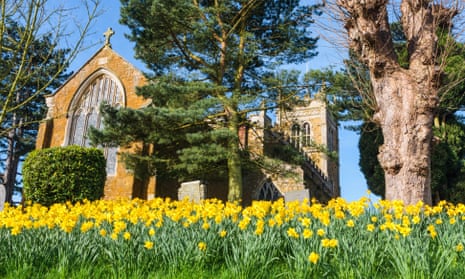For Christian worship in England, the Covid-19 lockdowns were a disaster. All churches were forced to close by the government during the first and second lockdowns. Where office working and high-street shopping led, Christianity followed. It stayed at home. Recently published research suggests that fully a quarter of Anglican churches are no longer holding weekly services. Five, 10, even 20 parish churches are being grouped under one hard-pressed vicar, with worshippers racing round to find which one is open.
Hopes that attendance would recover in 2022 have proved vain, though online worship has seen a boost. A preliminary survey of five representative dioceses suggests weekly attendance may have fallen during lockdowns by more than 20%. It is even possible that the final year’s figure may be below half a million. This follows a 15-20% fall in the decade from 2009. According to a 2022 survey just six% of adults in the UK are practising Christians. A 2005 study found there were more mosque-going British Muslims, about 930,000, than regular worshippers in the Church of England. Average attendance for Church of England Sunday services in 2021 was 509,000. The significance of this for the king’s ecclesiastical coronation next month grows ever more alarming. A secular ceremony of some sort would surely be more suitable.
This decline may not in itself affect the wider community. Indeed, it is reflected across all of western Europe. What should matter is what it means for the church estate. Muslims are served by 1,700 mosques across the UK. Anglicans in England have 16,000 parish churches to themselves, with another 35,000 churches and chapels available for other denominations. The latter are being converted to other uses by the day. But a church is the most prominent, not to mention magnificent, building in almost every English town and village. More than 12,000 are listed, yet some half of these stand rarely used, grim and deserted, often on key sites vulnerable to development.
Throughout history these buildings have offered their publics ceremony and memorial, peace and meditation, charity and friendship, quite apart from faith. It is wrong that modern communities do not use them for such – or any other – purposes merely because religion has declined. They were built on the tithes of rich and poor alike.
We know that dynamic clergy and committed congregations can foster institutions of which their forebears would have been proud. London’s St Mary’s Primrose Hill boasts a homeless shelter, a much-needed youth club, a children’s dance centre, a lecture series, a tearoom, a design fair and even a real ale brewery. It fills the gaps in an increasingly dilapidated welfare state. But such places enjoy private backing. Most empty parish churches are listed and unalterable. They have few friends and no realistic hope of recovery.
It is senseless to expect the Church of England to find the money to maintain these places into the future. The solution must be to reconnect them to the surrounding communities from which the decline in worship has distanced them. They must be wholly or partly secularised. This is happening across Europe, where churches are being brought under the aegis of local councils. They can benefit from a specific – usually small – local “church tax” which, in countries such as Sweden and Germany, is voluntary. This has been the churches’ salvation.
In Britain, Victorian law still effectively bans secular parish and town councils from grant-aiding places of worship. They were expected to look after themselves. Parish councils can support museums, village halls, pavilions, parks and gardens, but they risk being sued if they give a penny to what should be their finest public buildings.
Giving parishes and boroughs the option of taking responsibility for the upkeep and reuse of their churches is not adding a horrendous burden on local governments. It is simply allowing them the choice, and a voluntary means of exercising it. Foreign experience is that most people are happy to pay a small sum to keep their local church in good repair.
If ever there was an example of the new “localism” that the levelling up secretary, Michael Gove, claims to support, this must be it. He has a so-called levelling up bill before parliament. He should use it to give parish councils discretion to “localise” these ancient buildings. It would not cost his department a penny. Yet so far his minister, Jane Scott, has opposed a Lords amendment allowing this.
The reason is obvious. There are no atheists in Gove’s Whitehall department. They all worship one god, the god of centralism.
This article was amended on 14 April 2023 to clarify the following: churches in England were forced to close in the first and second lockdowns, not in the third; the figures for practising Christians, given as 2%, was amended to 6% and attributed to a 2022 survey; a figure for Sunday attendance for Church of England services in 2021 was added, and the 16,000 parish churches referred to are those of the Church of England.
Simon Jenkins is a Guardian columnist

